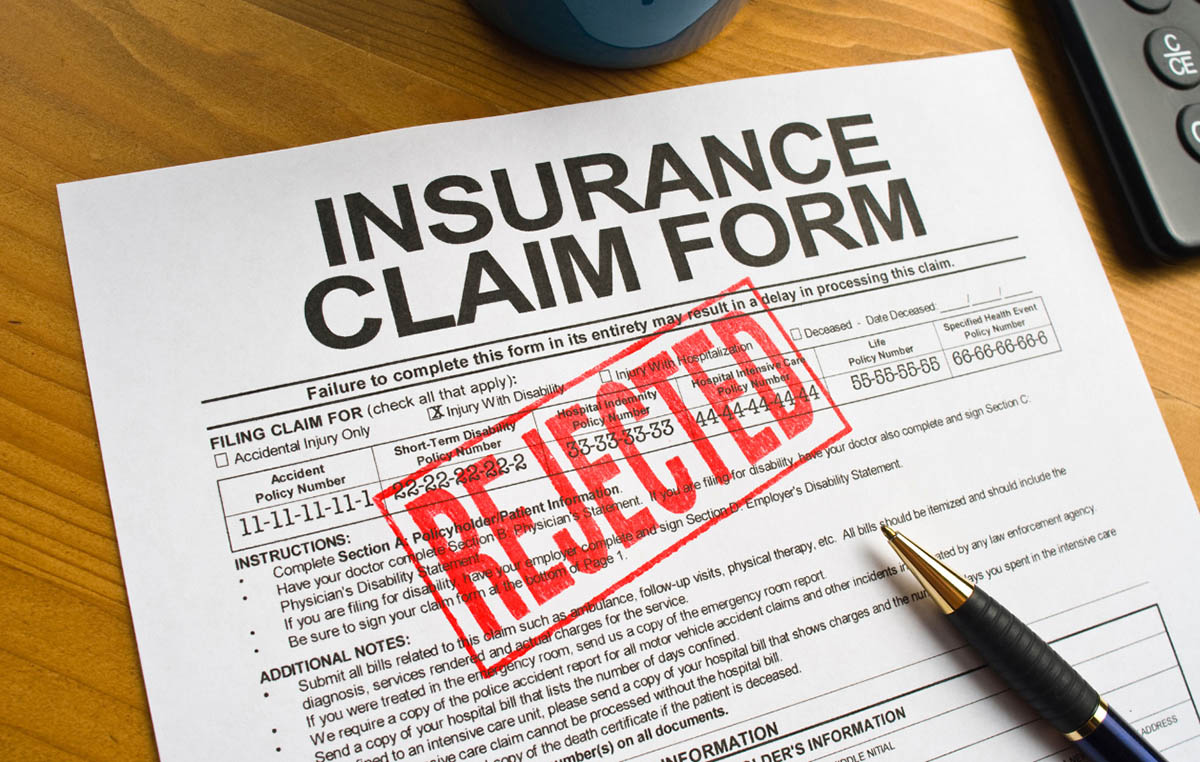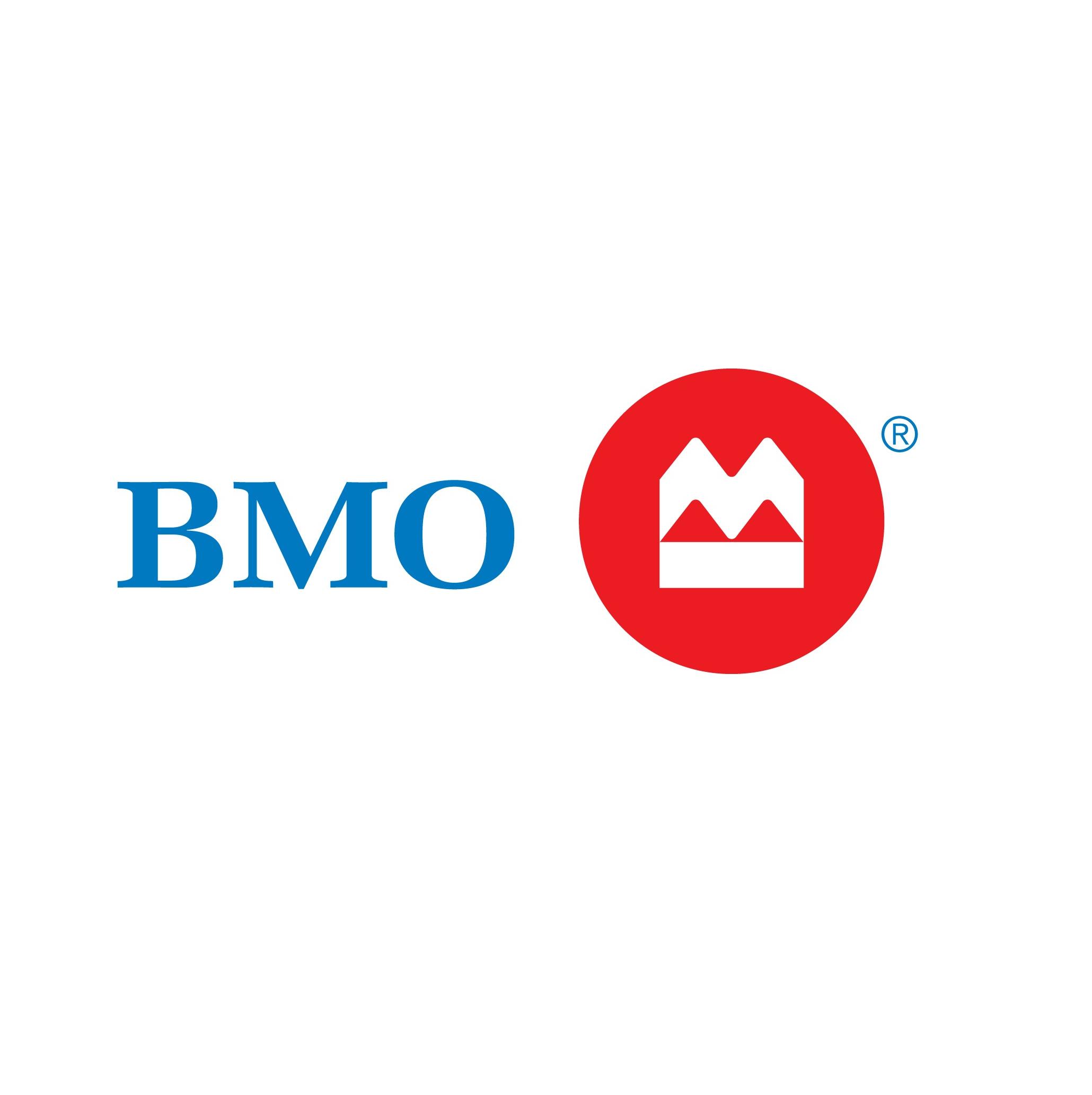

Finance
What Is Bad Faith In Insurance?
Published: November 6, 2023
Learn about bad faith in insurance and how it can affect your finances. Understand the risks and take steps to protect yourself from potential financial losses.
(Many of the links in this article redirect to a specific reviewed product. Your purchase of these products through affiliate links helps to generate commission for LiveWell, at no extra cost. Learn more)
Table of Contents
Introduction
Welcome to the world of insurance, a system that provides individuals and businesses with financial protection against unforeseen events. When we purchase insurance policies, we enter into a contract with the insurance company, trusting that they will act in good faith and honor their obligations. Unfortunately, there are instances where insurance companies fail to meet these expectations, engaging in what is known as “bad faith” practices.
Bad faith in insurance refers to situations where an insurance company unreasonably denies or delays the payment of valid claims, misrepresents policy terms, or fails to fully investigate claims in a timely manner. These actions can leave policyholders in a vulnerable position, facing financial hardships and frustration.
It is essential for policyholders to understand what constitutes bad faith in insurance and the consequences that insurance companies may face for engaging in such practices. Similarly, insurance companies must be aware of the actions that may be deemed as bad faith and take appropriate measures to avoid these practices.
In this article, we will explore the definition of bad faith in insurance, provide examples of bad faith practices, discuss the consequences insurers may face, and highlight ways to recognize and address bad faith actions. Additionally, we will delve into the legal recourse available for policyholders who have experienced bad faith practices and examine strategies insurers can adopt to avoid bad faith claims.
By shedding light on this topic, we aim to empower both policyholders and insurance companies to navigate the insurance landscape with integrity and fairness, ensuring that the fundamental principles of insurance are upheld.
Definition of Bad Faith in Insurance
Bad faith in insurance occurs when an insurance company fails to fulfill its obligations to policyholders in a fair and reasonable manner. It is the opposite of good faith, which means acting honestly, fairly, and in the best interests of the policyholder. When an insurance company acts in bad faith, it violates the trust and confidence that policyholders place in them.
There are various actions that can be considered bad faith in insurance. Some common examples include:
- Unreasonable denial of a valid claim: When an insurance company denies a claim that is covered by the policy without a valid reason or justification, it is acting in bad faith. This could occur when the insurer unjustly interprets policy language to avoid paying a claim or intentionally misrepresents policy terms to deny coverage.
- Delay tactics: Insurance companies have a responsibility to promptly investigate and process claims. However, if an insurer intentionally drags out the claims process, constantly requests unnecessary documentation, or uses other tactics to delay payment, it may be acting in bad faith.
- Insufficient investigation: Insurance companies are obligated to thoroughly investigate claims to determine their validity. If an insurer carries out a superficial investigation or fails to gather all the necessary information, it may be considered a bad faith practice.
- Offering unreasonably low settlements: When an insurance company offers an unreasonably low settlement amount that does not adequately compensate the policyholder for their losses, it is engaging in bad faith. Insurers should fairly evaluate the extent of the loss and provide a reasonable settlement based on the terms of the policy.
- Failure to communicate effectively: Insurers must communicate openly and honestly with policyholders. If an insurance company fails to respond to inquiries, keeps the policyholder in the dark about the status of their claim, or provides misleading information, it is acting in bad faith.
It’s important to note that the specific criteria for determining bad faith may vary depending on jurisdiction and the specific language of the insurance contract. However, these examples provide a general understanding of the types of actions that can be considered bad faith in insurance.
Next, we will explore real-life examples of bad faith practices to further illustrate how these actions can impact policyholders and erode trust in the insurance industry.
Examples of Bad Faith Practices
Bad faith practices in insurance can take many forms and have severe consequences for policyholders. Here are some real-life examples that highlight the detrimental impact of these actions:
- Unreasonable denial of a valid claim: Imagine a homeowner experiencing water damage due to a burst pipe covered by their insurance policy. The insurance company denies the claim, citing vague policy language and arguing that the cause of the damage is not covered. However, upon closer inspection, it is clear that the claim is valid and should be covered under the policy. In this case, the insurance company is acting in bad faith by unreasonably denying the claim and attempting to avoid payment.
- Delay tactics: A motorist is involved in a car accident and submits a claim to their insurance company for repairs and medical expenses. However, the insurance company continuously requests additional documentation and keeps asking for unnecessary details, resulting in a significant delay in processing the claim. This tactic places undue stress on the policyholder and prevents them from receiving timely compensation for their losses.
- Insufficient investigation: A business owner experiences a fire at their workplace and submits an insurance claim to cover the damages. However, the insurance company assigns an inexperienced adjuster who fails to conduct a thorough investigation into the cause of the fire and the extent of the losses. As a result, the claim is significantly undervalued, and the policyholder is left to bear the financial burden of the damages.
- Offering unreasonably low settlements: After a devastating storm, a homeowner files an insurance claim for roof damage. The insurance company offers a settlement amount that is far below the estimated cost of repairs, forcing the policyholder to either accept an inadequate settlement or face a lengthy and costly legal battle to obtain fair compensation.
- Failure to communicate effectively: A policyholder contacts their insurance company multiple times to inquire about the status of their claim but receives vague or evasive responses. The lack of clear communication leaves the policyholder confused and frustrated, jeopardizing their trust in the insurance company’s willingness to handle their claim in good faith.
These examples demonstrate how bad faith practices can create hardships and injustices for policyholders. Insurance companies have a duty to act honestly, fairly, and promptly when handling claims, and failing to do so undermines the very purpose of insurance.
In the next section, we will discuss the potential consequences that insurance companies may face for engaging in bad faith practices.
Consequences of Bad Faith
When insurance companies engage in bad faith practices, there are significant consequences that they may face. These consequences can range from financial penalties to reputational damage and legal repercussions.
Financial Penalties: Insurance regulators and authorities have the power to impose fines and penalties on insurance companies that are found to have engaged in bad faith practices. These penalties can be substantial and serve as a deterrent for insurance companies to act in bad faith.
Legal Liabilities: Policyholders who have been subjected to bad faith practices have the right to pursue legal action against the insurance company. They can file a lawsuit seeking to recover the benefits they are entitled to, as well as additional damages resulting from the insurer’s bad faith actions. In some cases, punitive damages may also be awarded to punish the insurance company for its misconduct.
Reputational Damage: Engaging in bad faith practices can have a severe impact on an insurance company’s reputation. News of an insurance company’s unfair treatment of policyholders can spread quickly, damaging its credibility and trustworthiness. This can lead to a loss of current and potential customers, as well as negative reviews and public backlash.
Increased Oversight: Insurance regulators may increase their scrutiny of insurance companies that have a history of bad faith practices. This can result in enhanced oversight and monitoring, making it more difficult for the insurance company to operate freely. It may also lead to more stringent regulations and requirements imposed on the company, further impacting its operations and profitability.
Loss of Business Opportunities: Insurance companies that have been involved in bad faith practices may find it challenging to establish partnerships or secure new business opportunities. Other businesses and organizations may be hesitant to collaborate with an insurance company that has a reputation for mistreating its policyholders.
It is important for insurance companies to understand that the consequences of acting in bad faith go beyond financial penalties. The damage to their reputation and the potential legal liabilities can have long-lasting effects on their business operations and overall success.
In the following section, we will explore ways to recognize and address bad faith actions by insurance companies.
Recognizing Bad Faith Actions
Recognizing bad faith actions by insurance companies can be crucial for policyholders in protecting their rights and interests. Here are some key indicators that may signal a potential case of bad faith:
- Unreasonable denial: If your insurance claim is denied without a valid reason or explanation, it could be a sign of bad faith. Review your policy carefully and consult with experts to determine the validity of your claim.
- Excessive delays: Insurance companies have a duty to process claims promptly. If your claim has been unreasonably delayed without any valid justification, it may indicate bad faith. Keep records of all communication and document any unjustifiable delays.
- Lack of communication: Insurance companies are obligated to provide timely and accurate information about the status of your claim. If they consistently fail to communicate, ignore your inquiries, or provide misleading information, it could suggest bad faith practices.
- Inadequate investigation: Insurance companies are responsible for conducting thorough investigations to validate claims. If they fail to gather necessary evidence, overlook critical details, or offer inadequate compensation without proper assessment of the loss, it may indicate bad faith.
- Unreasonable settlement offers: If the insurance company offers a settlement significantly below the estimated value of your losses or fails to take into account all relevant factors, it may be acting in bad faith. Consult with professionals to assess the fairness of the settlement offer.
- Pattern of similar misconduct: Research the insurance company’s track record and look for patterns of bad faith actions. If other policyholders have reported similar issues or there is a history of lawsuits related to bad faith practices, it may indicate a systemic problem.
If you believe that your insurance company is acting in bad faith, it is advisable to consult legal professionals experienced in insurance law. They can evaluate your situation, guide you through the process, and help you explore legal options if necessary.
Remember, recognizing bad faith actions is the first step towards protecting your rights as a policyholder. In the next section, we will discuss the legal recourse available to policyholders who have experienced bad faith practices.
Legal Recourse for Policyholders
Policyholders who have experienced bad faith practices by their insurance company have legal recourse available to seek compensation and hold the insurer accountable. Here are some common avenues for legal action:
- Internal Complaints and Appeals: Start by filing a formal complaint with your insurance company. Most insurers have a designated process for handling complaints and appeals. Be sure to provide detailed documentation, including correspondence and evidence supporting your claim.
- State Insurance Regulators: If your complaint is not resolved internally, you can escalate the matter to your state insurance department or regulator. They can investigate the case, mediate between you and the insurance company, and take appropriate action against the insurer if they find evidence of bad faith practices.
- Insurance Lawsuits: In cases where internal complaints and regulatory intervention fail to provide a satisfactory resolution, policyholders can file a lawsuit against the insurance company. An experienced insurance attorney can help you build your case, navigate complex legal procedures, and seek appropriate compensation for your losses.
- Potential Damages: In a successful bad faith lawsuit, policyholders may be entitled to various forms of compensation, including the original benefits owed under the policy, any damages resulting from the insurer’s actions, and potentially punitive damages awarded to punish the insurance company for its misconduct.
- Legal Representation: It is highly advisable to consult with an attorney specializing in insurance law when pursuing legal action against an insurer for bad faith. They can assess the merits of your case, gather evidence, negotiate on your behalf, and provide professional guidance throughout the legal process.
Keep in mind that legal recourse can be a complex and time-consuming process. It is important to consult with an attorney early on to understand your rights, evaluate the strength of your case, and determine the best course of action based on your specific circumstances.
Additionally, it’s worth noting that insurance laws and regulations may vary from state to state. It is essential to consult with an attorney familiar with the laws in your jurisdiction to ensure proper guidance and representation.
In the following section, we will discuss proactive measures that insurance companies can take to avoid bad faith claims.
How Insurers Can Avoid Bad Faith Claims
Insurance companies can take proactive measures to prevent and avoid bad faith claims. By prioritizing transparency, fair practices, and effective communication, insurers can build trust with policyholders and mitigate the risk of engaging in bad faith activities. Here are some key strategies:
- Clear and Unambiguous Policies: Insurers should ensure that their insurance policies are written in clear, concise language that is easily understandable for policyholders. Ambiguities and confusing terms can lead to misinterpretation and disputes, potentially resulting in accusations of bad faith. Regularly reviewing and updating policy language can help mitigate these issues.
- Ethical Claims Handling: Insurance companies should establish and maintain robust claims handling procedures that emphasize fairness and integrity. Promptly and thoroughly investigate claims, provide clear explanations for claim decisions, and communicate openly and honestly with policyholders throughout the process.
- Training and Education: Regularly train and educate claims adjusters and staff on best practices, legal requirements, and ethical standards. Equip them with the necessary knowledge and skills to handle claims effectively, professionally, and in compliance with applicable laws and regulations.
- Internal Controls and Oversight: Implement strong internal controls to verify and ensure consistency in claims handling processes. Have appropriate checks and balances in place to monitor claim adjuster performance, review claim decisions, and address any potential issues or patterns of questionable behavior promptly.
- Good Faith Communication: Establish clear channels of communication with policyholders and maintain regular updates on the status of their claims. Promptly respond to inquiries and provide accurate information in a transparent manner. Avoid any misleading or deceptive practices that could undermine trust in the company’s intentions.
- External Auditing: Periodically engage external auditors to review and assess claims handling practices and ensure compliance with regulations and industry best practices. These audits can identify any systemic issues or areas for improvement, allowing insurers to address them proactively.
By embracing these strategies, insurance companies can establish a culture of good faith and fairness, minimizing the risk of bad faith claims. This not only protects policyholders’ rights and interests but also helps maintain a positive reputation in the industry.
Continue to the concluding section to wrap up the main points of this article.
Conclusion
Understanding and addressing bad faith practices in the insurance industry is crucial for both policyholders and insurance companies. Bad faith actions, such as unreasonably denying claims, delaying payments, or offering inadequate settlements, can have severe consequences for policyholders, eroding trust and causing financial hardship.
In this article, we explored the definition of bad faith in insurance and provided examples of common bad faith practices. We also discussed the potential consequences insurance companies may face, including financial penalties, legal liabilities, reputational damage, and increased oversight.
Recognizing the signs of bad faith actions is essential for policyholders to protect their rights. Elements such as unreasonable denial, excessive delays, lack of communication, inadequate investigation, and unfair settlement offers can indicate potential bad faith practices.
Policyholders who have experienced bad faith have legal recourse available, including filing internal complaints and appeals, reporting the insurer to state insurance regulators, and pursuing lawsuits. Seeking the assistance of an experienced insurance attorney can be instrumental in navigating the legal process and maximizing the chances of a successful outcome.
Insurance companies can also take proactive measures to avoid engaging in bad faith practices. Clear policies, ethical claims handling, proper training and education, internal controls, good faith communication, and external auditing can all contribute to building a culture of fairness and trust.
By encouraging transparency, fairness, and effective communication, insurance companies can foster positive relationships with policyholders and mitigate the risk of bad faith claims. Ultimately, these efforts contribute to the overall reputation and success of the insurance industry as a whole.
As policyholders and insurance companies work together to uphold the principles of good faith, trust, and integrity, the insurance landscape can become a more reliable and mutually beneficial environment for all parties involved.














